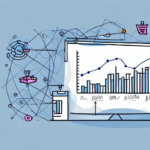Zone Skipping: Maximizing Workplace Efficiency in 2024
Welcome to your comprehensive guide on Zone Skipping, a transformative technique designed to enhance efficiency in the workplace. In today's dynamic business landscape, optimizing productivity, increasing efficiency, and minimizing wasted time are crucial for success. Zone Skipping offers a strategic approach to achieving more with less effort and time. In this article, we'll delve deep into the concept of Zone Skipping, provide actionable tips for implementation, and update you with the latest insights to ensure your workday is as productive as possible. Let’s dive in!
Why Zone Skipping Can Revolutionize Your Workday
Zone Skipping is a game-changer for improving workplace efficiency. By prioritizing and intelligently grouping tasks, you can handle similar activities together, thereby minimizing distractions and reducing the time lost to context-switching. This approach not only lowers decision fatigue but also boosts overall productivity. According to a study by the American Psychological Association, minimizing task-switching can increase productivity by up to 40%.
Additionally, Zone Skipping helps maintain focus and create a clear roadmap for your day, making progress towards your goals more manageable. This strategy is particularly beneficial for combating procrastination and reducing susceptibility to distractions. By identifying and addressing inefficiencies in your workflow, Zone Skipping allows for continuous optimization, leading to sustained productivity and reduced stress levels.
Benefits of Zone Skipping
- Enhanced Focus: Concentrate on similar tasks to maintain a state of flow.
- Reduced Stress: Clear task prioritization minimizes overwhelm.
- Increased Productivity: Efficient task management leads to more accomplished goals.
- Time Management: Optimizes the use of time by reducing unnecessary transitions.
Understanding the Concept of Zone Skipping
At its core, Zone Skipping involves categorizing tasks into defined "zones" based on their similarity or physical location. For instance, you might designate separate zones for email management, phone calls, meetings, and report writing. This method streamlines your workday by allowing you to focus exclusively on tasks within the same zone, thereby reducing the time and mental energy required to switch between different types of activities.
How Zone Skipping Works
- Identify Task Categories: Group tasks by similarity or location.
- Allocate Time Blocks: Schedule dedicated time for each zone.
- Focus on One Zone at a Time: Complete all tasks within a zone before moving to the next.
- Review and Adjust: Continuously evaluate the effectiveness and make necessary adjustments.
While Zone Skipping is highly effective, it’s essential to tailor the zones to fit your unique work style and the specific demands of your role. Flexibility and regular assessment are key to ensuring the system remains effective.
The Science Behind Efficiency and Productivity
The effectiveness of Zone Skipping is rooted in cognitive psychology. Our brains require time to adjust when switching between different tasks, a phenomenon known as the switching cost. This adjustment period can lead to reduced productivity and increased mental fatigue. By grouping similar tasks, Zone Skipping minimizes the switching cost, allowing for sustained concentration and higher efficiency.
Research from Stanford University highlights that multitasking can reduce productivity by up to 40%, as the brain struggles to efficiently handle multiple streams of information simultaneously. In contrast, focused task management methods like Zone Skipping leverage the brain's ability to maintain concentration, thereby enhancing overall performance.
Neuroscience of Task Management
- Focus and Flow: Continuous focus on similar tasks induces a state of flow, enhancing creativity and efficiency.
- Cognitive Load Reduction: Minimizing task-switching reduces the cognitive load, conserving mental resources.
- Decision Fatigue Mitigation: Structured task management lowers the number of decisions needed, preventing mental exhaustion.
How to Identify Zones in Your Workplace
Identifying effective zones requires a thorough understanding of your daily tasks and workflow. Start by listing all the tasks you perform regularly and categorize them based on their nature or location. Common zones might include:
- Email Management: Allocating specific times for checking and responding to emails.
- Meetings and Calls: Designating blocks of time for scheduled meetings and phone calls.
- Creative Work: Setting aside periods for brainstorming and creative tasks.
- Administrative Tasks: Handling paperwork, scheduling, and other administrative duties.
Observing the physical layout of your workspace can also aid in identifying zones. For example, if you work in an office with designated areas for different departments, use these physical boundaries to inform your task grouping. Additionally, consider the time of day when different zones may be more effective based on your personal productivity patterns.
Steps to Identify Your Zones
- List Your Tasks: Write down all tasks you perform on a typical day.
- Group Similar Tasks: Categorize tasks by similarity, type, or location.
- Analyze Task Frequency: Determine how often each task group needs attention.
- Allocate Time Blocks: Assign specific times for each group to optimize workflow.
Mapping Out Your Ideal Workday Using Zone Skipping
Once you’ve identified your zones, the next step is to map out your ideal workday. This involves scheduling dedicated time blocks for each zone, ensuring a smooth and efficient workflow. Here’s how to create an effective schedule:
- Start with High-Priority Zones: Allocate your peak productivity hours to your most important tasks.
- Batch Similar Tasks: Group related tasks together to maintain focus.
- Include Buffer Times: Schedule short breaks between zones to rest and recharge.
- Review and Adjust: Regularly assess your schedule’s effectiveness and make necessary adjustments.
For example, you might schedule email management in the morning when you’re fresh, followed by meetings in the late morning and creative tasks in the afternoon. Adjust the schedule based on your personal productivity rhythms and the specific demands of your role.
Sample Workday Schedule
| Time | Zone | Tasks |
|---|---|---|
| 8:00 AM - 9:00 AM | Email Management | Check and respond to emails |
| 9:00 AM - 11:00 AM | Meetings and Calls | Attend scheduled meetings and phone calls |
| 11:00 AM - 12:30 PM | Creative Work | Brainstorming and project development |
| 1:30 PM - 3:00 PM | Administrative Tasks | Handle paperwork and scheduling |
| 3:00 PM - 4:00 PM | Follow-Up and Planning | Review progress and plan for the next day |
Tips for Implementing Zone Skipping in Your Daily Routine
Implementing Zone Skipping effectively requires discipline and strategic planning. Here are some tips to help you integrate this technique into your daily routine:
Minimize Distractions
Turn off non-essential notifications and create a workspace conducive to focused work. Tools like Todoist or Asana can help manage tasks and reduce distractions.
Stay Flexible
While having a structured schedule is important, staying flexible allows you to adapt to unexpected changes or urgent tasks without disrupting your entire workflow.
Take Regular Breaks
Incorporate short breaks to rest and recharge. Techniques like the Pomodoro Technique advocate for focused work sessions followed by brief breaks to maintain high levels of productivity.
Prioritize Tasks
Use tools like the Eisenhower Matrix to prioritize tasks based on urgency and importance, ensuring that critical tasks are addressed first.
Leverage Productivity Tools
Utilize time-tracking and project management software to stay organized and monitor your progress. Applications such as Toggl or Notion can streamline your workflow and enhance efficiency.
Common Pitfalls to Avoid When Using Zone Skipping
While Zone Skipping offers numerous benefits, it's essential to be aware of common pitfalls to ensure its effectiveness:
Over-Planning
Spending excessive time organizing your schedule can negate the benefits of increased efficiency. Aim for a balanced approach to planning without overcomplicating your workflow.
Tunnel Vision
Be cautious of becoming too rigid in your approach. Flexibility is key to adapting to new tasks or changes in priorities. Stay open to feedback and be willing to adjust your zones as needed.
Multitasking
Avoid the temptation to multitask, as it can reduce overall productivity and increase the likelihood of errors. Focus on one zone at a time to maintain high-quality work.
Neglecting Breaks
Failing to take regular breaks can lead to burnout and decreased productivity. Ensure that your schedule includes time for rest and rejuvenation.
Collaborative Zone Skipping: Maximizing Team Efficiency
Zone Skipping isn't limited to individual use; it can also significantly enhance team efficiency. By identifying and aligning the zones within your team, you can streamline collaborative efforts and improve overall productivity.
Workflow Analysis
Conduct a workflow analysis to map out the steps involved in team tasks. Identify areas of redundancy or inefficiency and adjust your processes accordingly to eliminate unnecessary steps.
Clear Communication
Ensure that all team members understand the zones and their respective responsibilities. Clear communication fosters accountability and ensures that everyone is aligned towards common goals.
Delegation and Specialization
Assign specific zones to team members based on their strengths and expertise. This specialization allows for more efficient task completion and higher-quality outcomes.
Measuring Success: Tracking Productivity Gains with Zone Skipping
To gauge the effectiveness of Zone Skipping, it’s crucial to regularly measure and track your productivity gains. Here are some strategies to effectively monitor your progress:
Set Clear Metrics
Define specific metrics to assess productivity, such as the number of tasks completed, time spent on each zone, and overall output quality.
Use Analytical Tools
Leverage tools like RescueTime or Habitica to track time spent on different tasks and analyze productivity patterns.
Regular Reviews
Conduct weekly or monthly reviews to evaluate your performance. Identify areas of improvement and adjust your zones or strategies accordingly to enhance efficiency.
Feedback and Adjustments
Seek feedback from team members or supervisors to gain insights into how Zone Skipping is impacting your workflow. Use this feedback to make informed adjustments and continuously optimize your approach.
In conclusion, Zone Skipping is a powerful strategy for maximizing workplace efficiency and productivity. By understanding its principles, identifying your zones, and implementing structured schedules, you can achieve significant gains in your work performance while reducing stress. Remember to remain flexible, avoid common pitfalls, and continuously measure your progress to ensure sustained success. Embrace Zone Skipping and take control of your productivity in 2024!
For more insights on boosting workplace productivity, consider exploring resources from reputable sources such as the McKinsey & Company and the Harvard Business Review.






















